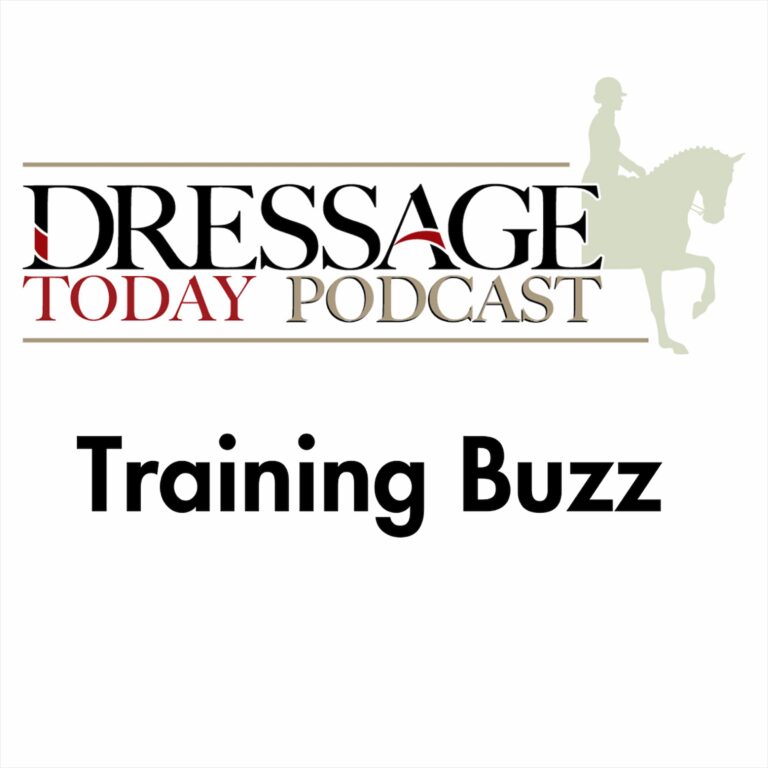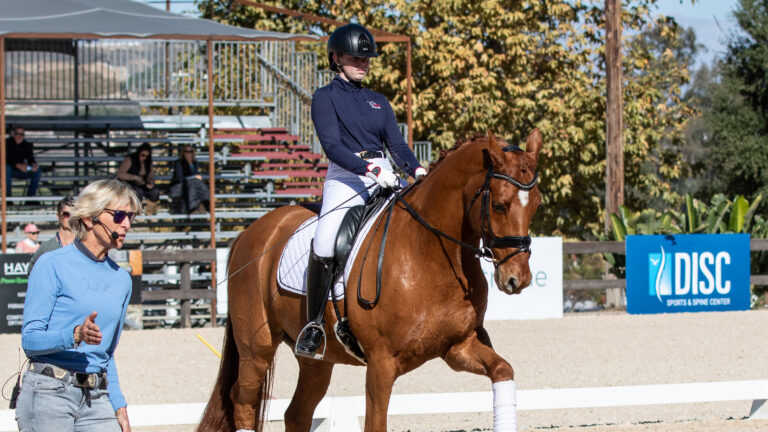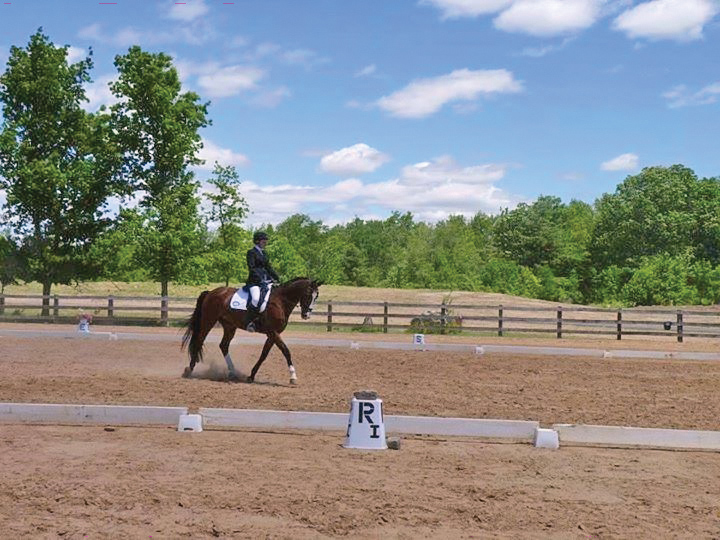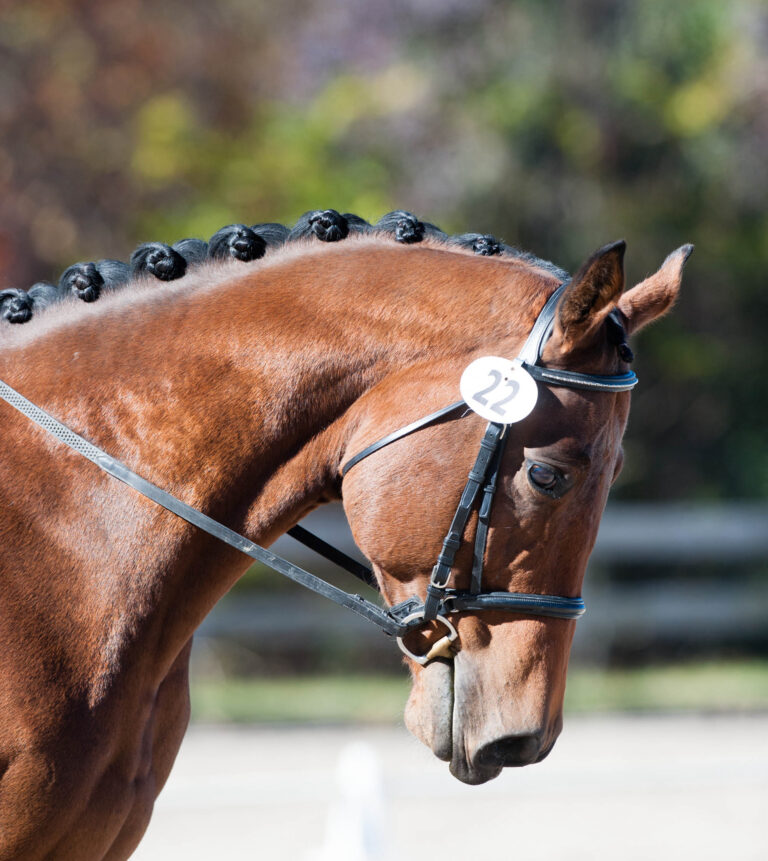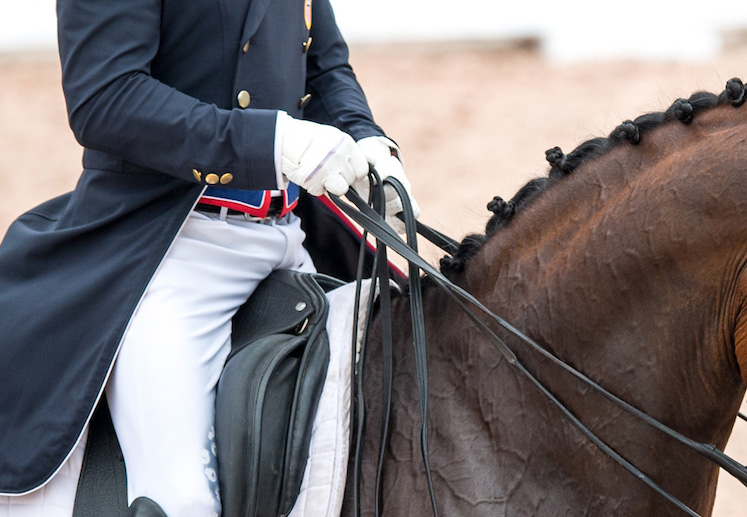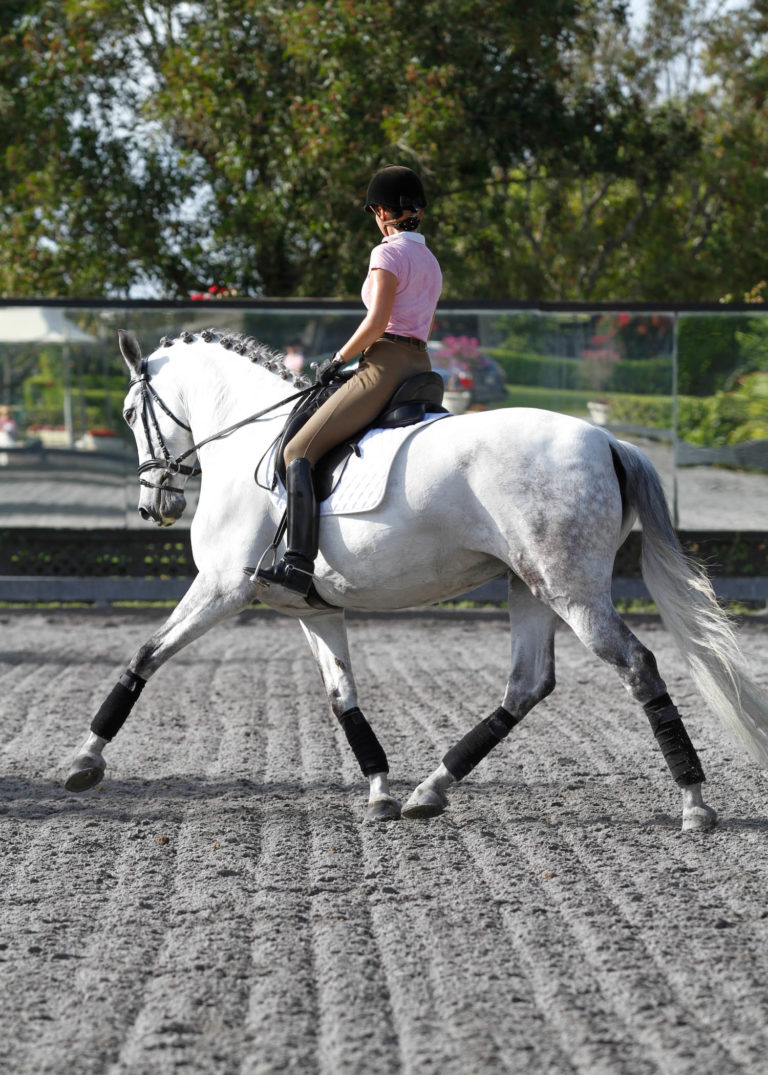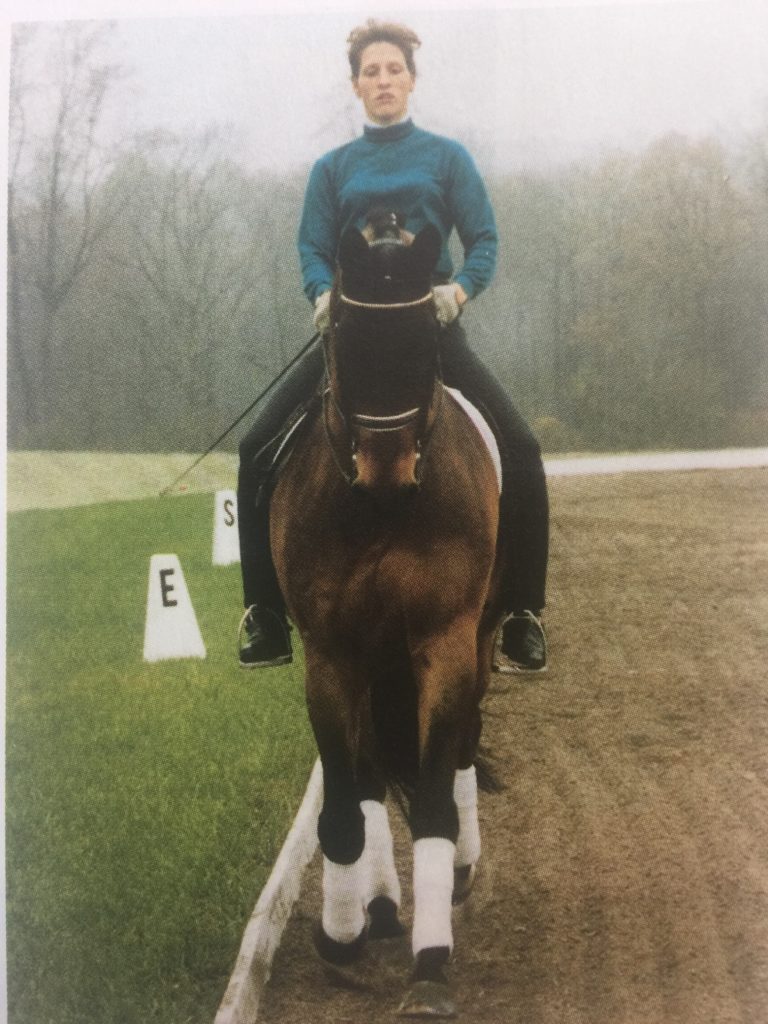Q: I am trying to teach my horse a clear walk–canter depart. So far I have not been successful and there are always a few quick trot steps in between. My instructor told me to raise my hands just prior to the canter, which I have never heard before, and lean a bit forward with my upper body. How can I teach my horse a clear walk–canter depart? He is a 5-year-old off-the-track Thoroughbred (OTTB), and we are currently schooling Training Level. —Name withheld by request
A: First let’s talk about the walk–canter transition. Most young horses can easily accelerate from a halt or walk into canter. Let’s face it, your OTTB went from a standstill into a gallop in his previous career. Yet the walk–canter transition does not show up in dressage competition until Second Level. Second Level is the first level that requires collection. The reason for this is that in dressage we want more than just an obedient walk–canter transition. We expect the walk preparation to keep a clear walk rhythm as the horse accepts the half halt by shortening the walk and keeping or increasing his balance. We expect a clear transition with more weight on the hindquarters as the horse steps into a collected canter. A clean, balanced walk–canter transition in a calm and confident demeanor can be a significant step for a Training Level horse and rider.
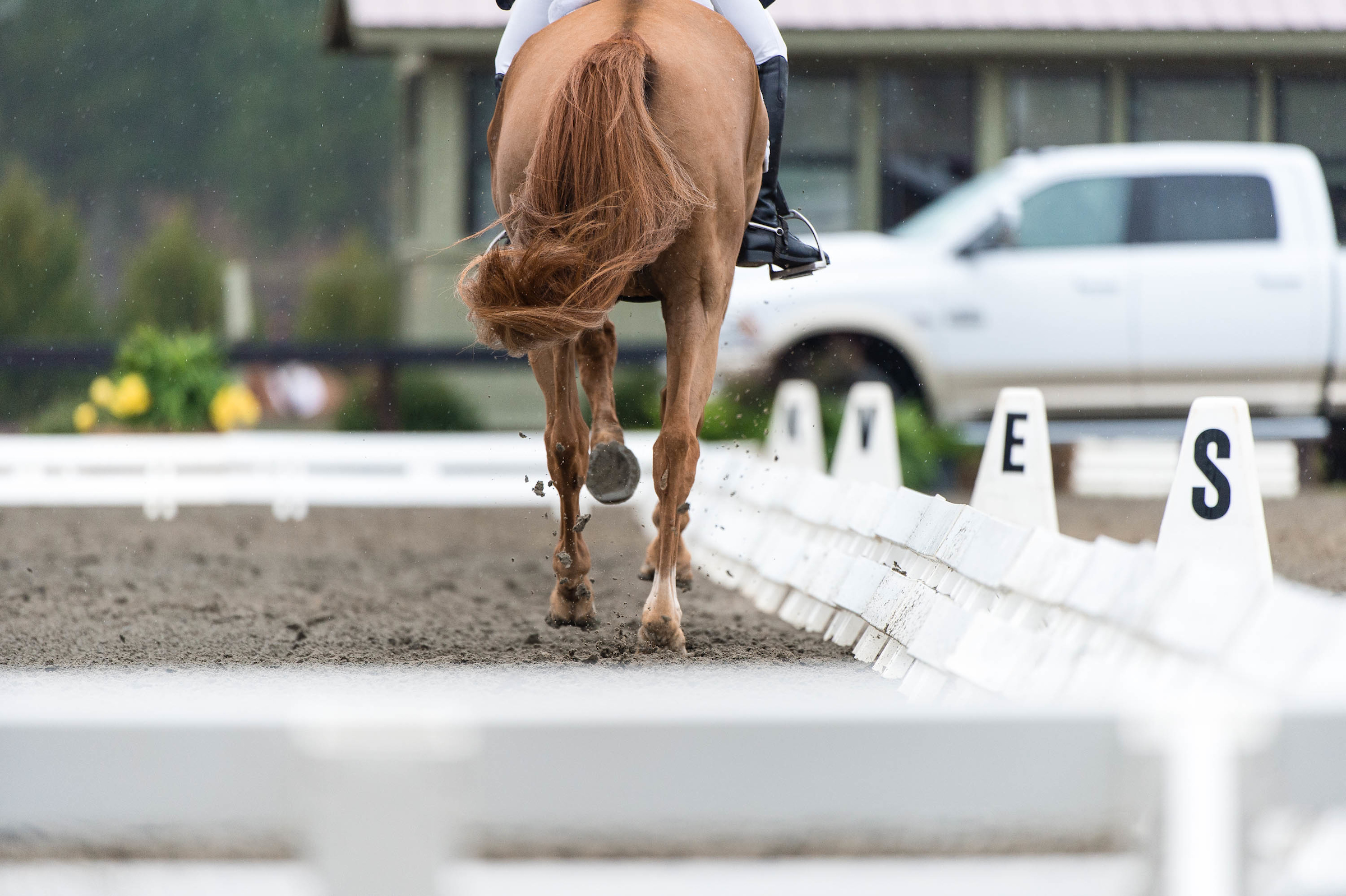
If a horse and rider are capable of the following elements, the walk–canter transition will be part of a logical training progression. You will be most prepared for this exercise if you can:
• Consistently perform trot–canter transitions at various places around the arena, on both a circle and a straight line.
• Give aids for the canter that are consistent and correct.
• Perform trot–canter transitions that are calm, prompt and balanced.
• Half halt effectively in preparation. The half halt (DR 108 in the USDF Rule Book) is a hardly visible, almost simultaneous coordinated action of the seat, the legs and the hand of the rider, with the object of increasing the attention and balance of the horse.
• Stay with the correct mechanics of the gait as the horse steps into canter.
• Keep the training progressing with a positive attitude, accepting the small mistakes along the way.

Let’s go back to the second item on the list: consistent and correct canter aids. The generally accepted aids for the canter are the outside leg slightly back, the inside leg at the girth or slightly forward, a slightly increased weight on the inside seat bone and a steady connection on the outside rein. The rider needs to be able to allow the horse some freedom with the inside rein so the horse can reach freely forward with the inside shoulder. The outside rein stays steady. Some trainers emphasize the importance of the outside leg and some emphasize the inside leg. Whichever set of aids you and your trainer prefer, it is important to be consistent. We often talk about the seat. Be honest with yourself. If your seat is not yet controlled enough to weight a seat bone without leaning, just stay centered.
Now for some ideas on cleaning up the transition:
• Make a transition (from the walk) into canter through the trot. Allow a certain number of trot steps. As the transition becomes easy, reduce the number of trot steps by one until you are going directly from walk to canter. Make this a game for you and your horse.
• If you and your horse have spent time with groundwork and longeing, this may be an ideal time to use the voice as an additional aid. Even though we are not allowed to use the voice in dressage competition, this is one training situation where a cluck or a verbal cue may help your horse understand what you want.
• Make some small lateral movements to get your horse listening to your aids more quickly. The movements don’t need to be to the full show angle, use just enough angle and steps that the horse reacts promptly to your aids. I like to use a few steps of a mini-leg-yield each way, then go into canter. When using the leg-yield to prepare for canter, you do not need or want a big crossover step. Keep the steps active and work to increase the response to your leg. Sometimes a few steps of a mini-renvers gets the horse active, balanced and ready to canter. Work with your instructor to decide which steps work best for you.
• Play with the timing of your canter aids. The horse steps into canter off the outside hind. So if you are going into a right-lead canter, you need to cue your horse when the left hind is stepping onto the ground. A ground person can help as you develop the feel for which hind leg is touching down.
• Have a more experienced rider school your horse in the walk–canter transitions. Once he is confident stepping directly into canter, give it a try yourself.
If you are still having difficulty getting a clean transition from walk to canter, take a step back and reconfirm your training and correctness in the movements and transitions from Training and First Level before trying again. Above all, through the training process stay calm and encouraging so that your horse maintains the desire to work with you. A calm step from walk to canter is a wonderful, uplifting feeling.

Debbie Rodriguez is a USDF bronze, silver and gold medalist as well as a USEF “S” dressage judge and a USEF “r” eventing judge. She is the show manager of Dressage at Lexington and developed “Success in the Saddle,” a core fitness program for equestrians. She teaches and trains in Williamsburg, Virginia (debbierodriguezdressage.com).


